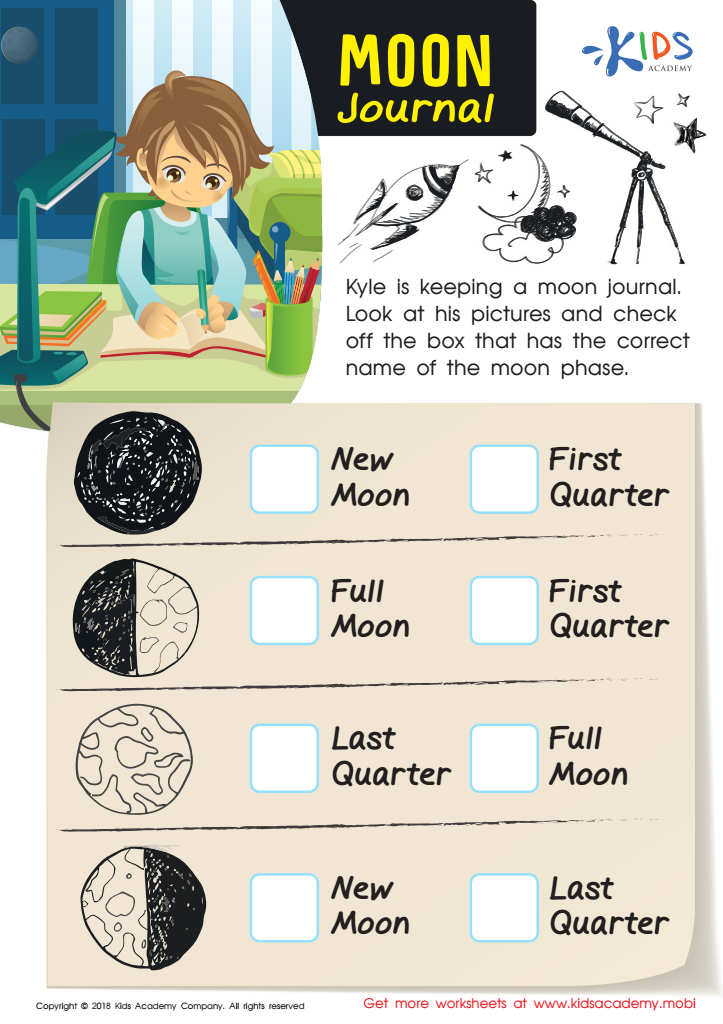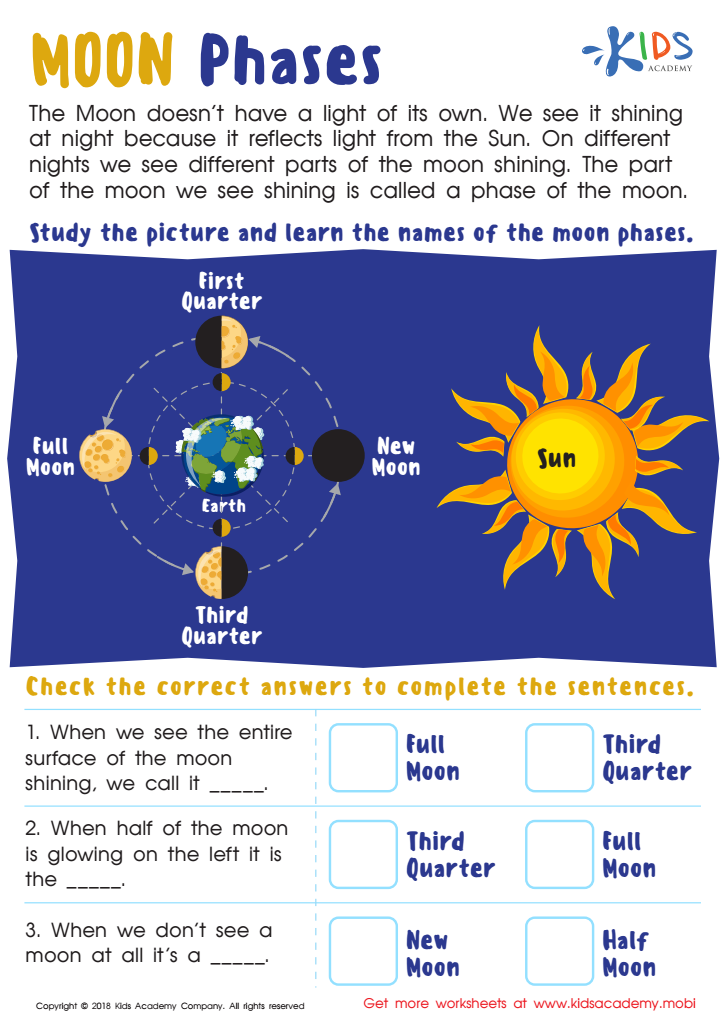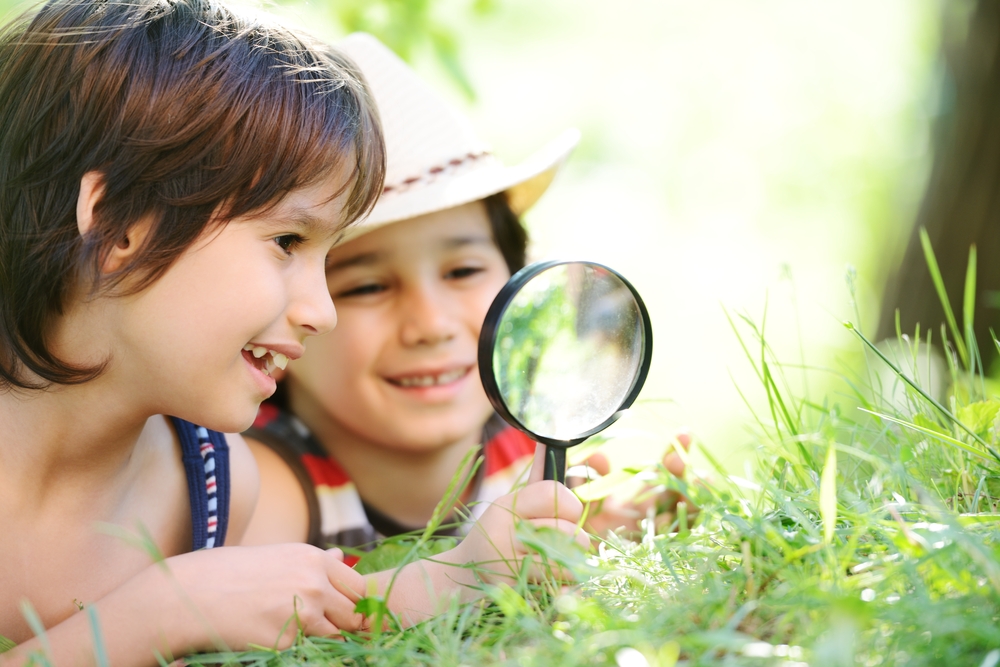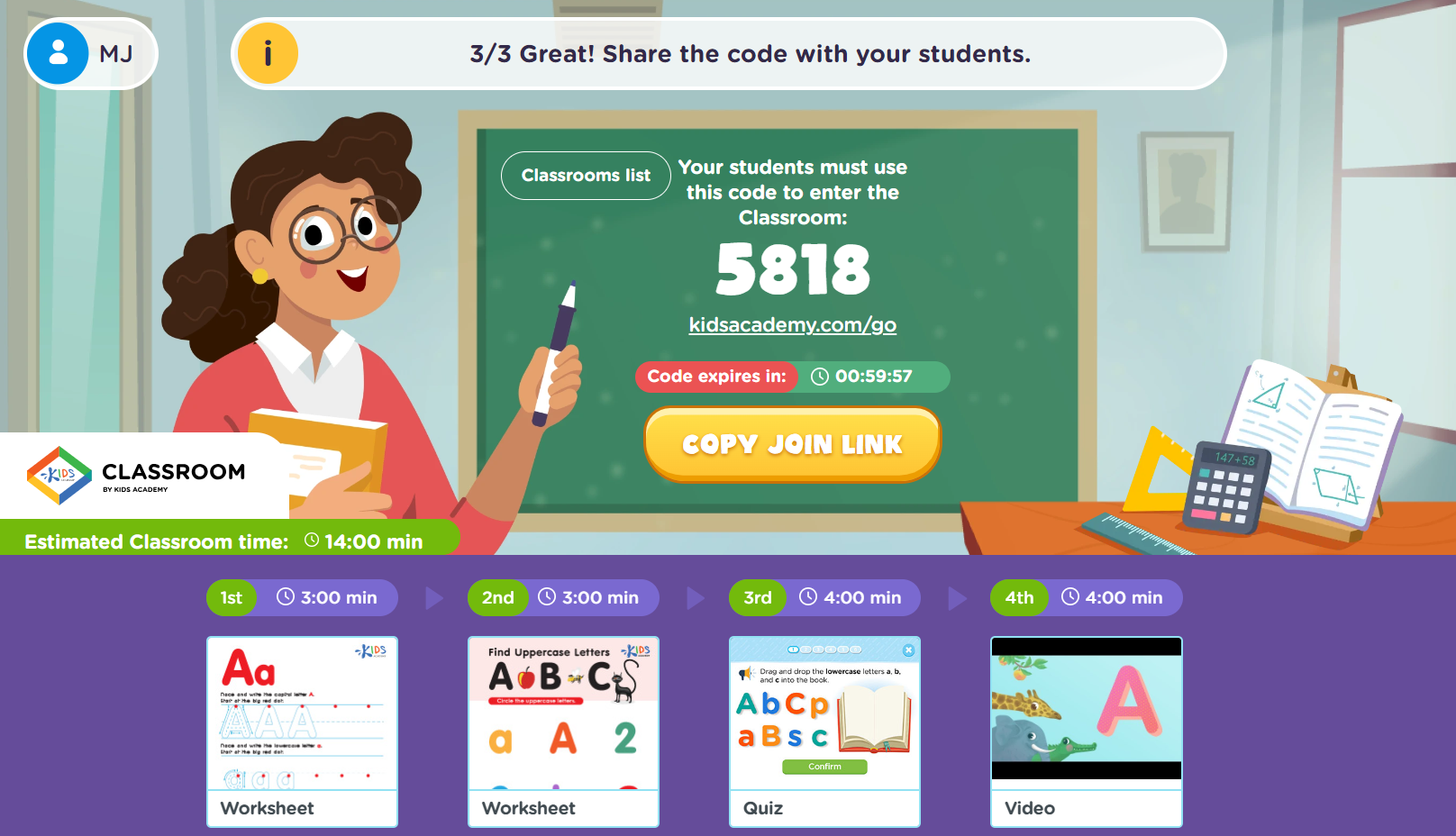Understanding moon phases Normal Space Worksheets for Ages 6-9
3 filtered results
-
From - To
Explore the fascinating world of moon phases with our engaging Normal Space Worksheets designed specifically for children aged 6-9. These fun and educational resources help young learners understand the different phases of the moon, including new moon, crescent, half, and full moon. Each worksheet promotes critical thinking and observational skills, making it perfect for enhancing science lessons at home or in the classroom. With colorful illustrations and interactive activities, your child can easily grasp complex concepts while enjoying the process. Dive into the wonders of astronomy and make learning about the night sky an exciting adventure with our moon phase worksheets!


Moon Journal Worksheet


Phases of The Moon Worksheet


Moon Phases Worksheet
Understanding moon phases is important for children aged 6-9 as it fosters curiosity about natural science and our universe. Teaching children about the moon’s cyclical nature—new moon, waxing crescent, first quarter, waxing gibbous, full moon, waning gibbous, last quarter, and waning crescent—helps them understand astronomical phenomena and promotes a sense of wonder about the world around them.
For parents and teachers, introducing moon phases can engage students through hands-on activities, like creating a moon journal or building models, which enhances experiential learning. It also serves as a perfect platform for teaching observational skills and the scientific method. Educators can combine lessons on moon phases with storytelling and cultural practices, linking the topic to art, history, and literature.
Additionally, understanding moon phases helps students grasp broader concepts such as timekeeping, gravity, and ecology, encouraging them to make connections between science and their daily lives. Moreover, it provides an engaging subject matter that can boost cognitive development, critical thinking, and spatial awareness while offering an opportunity to practice literacy and numeracy through moon phase calendars or related games. Ultimately, knowledge of moon phases nurtures inquisitive minds, laying the foundation for a lifelong love of science.
 Assign to My Students
Assign to My Students


.jpg)

%20(1).jpg)










